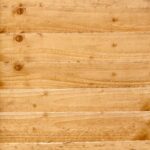Woodwork has long been a staple in interior design, adding warmth and character to any space. However, simply crafting and assembling the woodwork is not enough to truly enhance its beauty. Glossing woodwork is a crucial step that brings out the natural textures, grains, and colors of the wood, creating a stunning visual appeal.
Glossing woodwork not only adds an attractive sheen but also provides numerous benefits. It serves as a protective layer, shielding the wood from moisture, stains, and scratches. Additionally, glossing enhances the longevity of the woodwork by preventing warping or cracking due to exposure to environmental factors.
The allure of glossed woodwork lies in its ability to transform ordinary pieces into focal points within a room. The glossy finish reflects light beautifully, making the woodwork appear more vibrant and eye-catching. Whether it’s enhancing the elegance of furniture, showcasing architectural details, or revitalizing tired cabinetry, glossing woodwork adds a touch of sophistication and charm to any interior space.
When it comes to glossing woodwork, there are various finishes available that cater to different needs and preferences. From lacquers and varnishes to polyurethane coatings, each finish type offers unique characteristics suited for specific applications. Understanding these differences will help you identify the best finish for your particular woodwork project.
In this article, we will delve into the world of glossing woodwork and provide you with all the information you need to achieve beautifully finished results. We will explore the different types of finishes available, share step-by-step instructions on applying gloss to wood surfaces effectively, discuss tips for choosing the right gloss level for your project, provide maintenance guidelines for preserving your glossy finish over time.
So let’s get started on transforming your woodwork into stunning pieces that leave a lasting impression.
Understanding the Different Types of Woodwork Finishes
Woodwork finishes play a crucial role in enhancing the appearance and durability of your wooden furniture or surfaces. Understanding the different types of woodwork finishes available is essential for achieving the desired look and protection for your project.
There are several common types of woodwork finishes, each with its own unique characteristics and benefits. Here is a brief overview of some popular types:
- Lacquer: Lacquer is a clear coating that provides a glossy finish to woodwork. It offers excellent protection against scratches, moisture, and UV damage. Lacquer dries quickly, allowing for multiple coats to be applied within a short period.
- Varnish: Varnish is another type of clear coating that provides a durable finish to woodwork. It offers good protection against wear, water, and heat. Varnish takes longer to dry compared to lacquer but provides superior durability.
- Polyurethane: Polyurethane is a versatile finish that comes in both water-based and oil-based forms. It provides excellent protection against scratches, stains, and moisture. Polyurethane creates a hard and durable finish that can withstand heavy use.
When selecting the best finish for your woodwork project, consider factors such as the desired level of glossiness, durability requirements, ease of application, and the type of wood being used. Each type of finish has its own application method and drying time, so it’s important to follow the manufacturer’s instructions for optimal results.
Preparing the Woodwork for Glossing
Before applying gloss to your woodwork, it is crucial to properly prepare the surface. This section will outline the essential steps and tools needed for a successful preparation process.
- Cleaning: Begin by thoroughly cleaning the woodwork to remove any dirt, dust, or grease that may affect the adhesion of the gloss. Use a mild detergent solution and a soft cloth to wipe down the surface, ensuring that all areas are clean and free from debris.
- Sanding: Next, sand the woodwork to create a smooth and even surface for better gloss adhesion. Start with a coarse-grit sandpaper (around 80-120 grit) to remove any existing finish or imperfections. Then, switch to a finer-grit sandpaper (around 180-220 grit) for a smoother finish. Sand in the direction of the wood grain to avoid scratching or damaging the surface.
- Filling imperfections: If there are any gaps, cracks, or holes in the woodwork, it is essential to fill them before glossing. Use a good-quality wood filler or putty that matches the color of your woodwork. Apply the filler with a putty knife and smooth it out until it is level with the surrounding surface. Allow it to dry completely before moving on.
- Tools and materials: Gather all necessary tools and materials before starting the preparation process. These may include sandpaper (different grits), tack cloth or microfiber cloth for dust removal after sanding, wood filler or putty, putty knife, and painter’s tape if needed to protect adjacent surfaces during gloss application.
By following these preparatory steps carefully, you can ensure that your woodwork is ready for gloss application. The cleanliness and smoothness of the surface will greatly contribute to achieving a flawless glossy finish.
Step-by-Step Guide on Applying Gloss to Woodwork
Gather the Necessary Materials
Before starting the glossing process, it is essential to gather all the necessary materials. This will ensure a smooth and efficient application. Some of the materials you will need include:
- Gloss finish of your choice (lacquer, varnish, or polyurethane).
- Paintbrush or sprayer.
- Sandpaper (in various grits).
- Protective gloves and eyewear.
- Clean cloth or tack cloth for wiping down the woodwork.
Prepare the Woodwork Surface
To achieve a flawless finish, it is crucial to properly prepare the woodwork surface before applying gloss. Start by cleaning the woodwork thoroughly with a mild soap and water solution to remove any dirt or grease. Once clean, allow it to dry completely.
Next, inspect the woodwork for any imperfections such as dents or scratches. Use a suitable filler to fill in these gaps, following the manufacturer’s instructions. After filling in imperfections, sand down the woodwork using sandpaper of gradually finer grits until it feels smooth to the touch.
Apply the Gloss Finish
Once the woodwork has been prepared, it’s time to apply the gloss finish. Dip your paintbrush into the can of gloss and begin coating one section of the woodwork at a time. Work in long, even strokes following the direction of the grain.
It is important to apply thin layers of gloss rather than thick coats to avoid drips or brush marks. Allow each layer to dry completely before applying another coat. Depending on your desired level of glossiness, you may need multiple coats.
When using a sprayer for application, follow manufacturer instructions for optimal results. Remember to wear appropriate protective gear and work in well-ventilated areas when spraying.
By following these step-by-step instructions, you can achieve a professional-looking gloss finish on your woodwork. Remember to take your time, be patient, and enjoy the process of transforming your woodwork into a stunning masterpiece.
Choosing the Right Gloss for Your Woodwork
When it comes to glossing woodwork, selecting the right type of gloss is crucial in achieving the desired finish. The level of gloss that you choose will not only affect the aesthetic appeal of your woodwork but also contribute to its durability and functionality. In this section, we will explore the different gloss options available and provide guidance on how to select the appropriate gloss level for your specific project.
Explanation of Different Gloss Options
There are various gloss options available for woodwork, each offering a different level of sheen. Here are some common types:
- High Gloss: High gloss finishes are known for their reflective and mirror-like appearance. They provide a luxurious, sleek, and modern look to woodwork. This type of gloss is ideal for contemporary or minimalist interior designs.
- Semi-Gloss: If you want a balance between high shine and practicality, semi-gloss finishes are a great choice. They offer some reflection while being more forgiving in terms of showcasing imperfections or dust particles. Semi-gloss finishes work well in kitchens, bathrooms, or high-traffic areas as they are relatively easy to clean.
- Satin: Satin finishes have a subtle sheen that adds elegance and sophistication to woodwork without being overwhelming. They strike a good balance between reflecting light and hiding minor flaws or scratches. Satin finishes are versatile and can be used in various design styles.
- Matte: Matte finishes have little to no sheen, providing a smooth and velvety appearance to woodwork. They create a more natural look that showcases the texture and grain of the wood without drawing attention away from other focal points in your space.
Factors to Consider
When choosing the appropriate gloss level for your woodwork, consider the following factors:
- Style: The style of your space plays an important role in determining the gloss level. High gloss finishes are often associated with modern or contemporary designs, while matte or satin finishes are more commonly found in traditional or rustic interiors.
- Purpose: Consider the purpose of the woodwork when selecting a gloss level. For example, high gloss finishes may not be as suitable for surfaces that are prone to scratches or wear, such as flooring or tabletops. In these cases, a satin or matte finish would be more practical.
- Lighting: Take into account the lighting conditions in your space. High gloss finishes can enhance natural and artificial light by reflecting it throughout the room, making it appear brighter and more spacious. In areas with less natural light, a satin or matte finish may be preferred to avoid highlighting imperfections.
Remember, different manufacturers may have variations in their gloss levels, so it is always recommended to test the finish on a small inconspicuous area of your woodwork before proceeding with the entire project.
By considering these factors and understanding the different gloss options available, you can confidently choose the right gloss for your woodwork project that will enhance its beauty and functionality while complementing your overall design vision.
Maintaining and Caring for Glossed Woodwork
Once you have successfully glossed your woodwork and achieved a beautiful finish, it is important to take proper care of it to ensure its longevity and continued aesthetic appeal. Proper maintenance will help preserve the gloss finish and prevent damage or wear over time. Here are some tips for maintaining and caring for glossed woodwork:
- Regular Cleaning: Dust and dirt can accumulate on the surface of your glossed woodwork, dulling its shine. Regular cleaning is essential to keep it looking fresh and vibrant. Use a soft cloth or feather duster to gently remove any dust or debris from the surface. Avoid using abrasive cleaners or harsh chemicals that can strip away the gloss finish.
- Protective Measures: To prevent scratches or damage to your glossed woodwork, it is important to take protective measures. Consider using coasters under glasses or placing felt pads on the bottom of objects that are frequently moved across the wood surface. Be cautious when placing sharp objects on the woodwork, as they can cause permanent scratches.
- Avoid Direct Sunlight: Extended exposure to sunlight can cause fading and discoloration of your glossed woodwork over time. To protect it from harmful UV rays, consider using curtains, blinds, or window films to block out direct sunlight during peak hours of the day.
- Touch-up as Needed: Despite your best efforts, minor wear or small imperfections may occur on your glossed woodwork over time. Fortunately, touch-ups are relatively easy to do with the right materials and techniques. Simply sand down the affected area lightly, clean it thoroughly, apply a fresh coat of gloss, and allow it to dry completely before blending it into the surrounding finish.
- Professional Maintenance: For larger areas or more extensive damage on your glossed woodwork, you may want to consider seeking professional help for repair or refinishing services. Professionals have the knowledge and expertise to properly assess and address any issues with your woodwork, ensuring that it retains its beauty and gloss for years to come.
By following these maintenance tips and taking good care of your glossed woodwork, you can enjoy its beauty and shine for a long time. Regular cleaning, protective measures, and proper touch-ups will help maintain the integrity of the gloss finish and ensure that your woodwork continues to enhance the overall aesthetic appeal of your space. Remember, caring for glossed woodwork is an ongoing process that requires attention and effort, but the results are well worth it in the end.
Troubleshooting Common Issues in Glossing Woodwork
When it comes to glossing woodwork, there can be a variety of common issues that arise during the process. However, with the right knowledge and techniques, these issues can be easily resolved, resulting in a smooth and flawless finish.
One common problem encountered when applying gloss to woodwork is streaks. Streaks can occur when the gloss is not evenly distributed across the surface of the woodwork. To avoid streaks, it is important to apply an even coat of gloss using long and smooth strokes. Additionally, make sure to properly mix the gloss before application to ensure consistent color and texture.
Another issue that may arise is the presence of bubbles in the glossed surface. Bubbles can occur if air becomes trapped in the gloss during application. To prevent this, it is important to properly prepare the surface by cleaning and sanding it thoroughly before applying the gloss. Additionally, avoid shaking or stirring the gloss vigorously as this can introduce air bubbles. Instead, gently stir or roll the container to mix the gloss.
Uneven application is another common problem that may occur when glossing woodwork. This can result in areas that appear thicker or thinner than others, creating an uneven finish. To achieve even coverage, start by applying thin coats of gloss rather than trying to achieve full coverage with one thick coat. Allow each coat to dry completely before applying additional coats. If uneven areas are still visible after multiple coats, lightly sand them down and reapply a thin layer of gloss.
By being aware of these common issues and following these troubleshooting tips, you can overcome any obstacles that may arise while glossing your woodwork project.
| Common Issue | Troubleshooting Tip |
|---|---|
| Streaks | Apply an even coat of gloss using long and smooth strokes |
| Bubbles | Properly prepare the surface before applying the gloss and avoid vigorous shaking or stirring |
| Uneven Application | Apply thin coats of gloss, allow each coat to dry completely, and sand down uneven areas if necessary |
Inspiring Ideas for Incorporating Glossed Woodwork in Interior Design
Woodwork with a glossy finish can add a touch of elegance and sophistication to any interior design. Whether you prefer traditional or modern styles, glossed woodwork can be incorporated in various ways to enhance the overall aesthetic appeal of a space. Here are some inspiring ideas on how to use glossed woodwork in your interior design:
- Accent Walls: Create a focal point in a room by incorporating an accent wall with glossed woodwork. This could be achieved by applying gloss to a single wall or using wood panels with a high-gloss finish. The reflective surface will draw attention and create visual interest in the space.
- Kitchen Cabinets: Glossy finishes are becoming increasingly popular for kitchen cabinets. They not only give the cabinets a sleek and contemporary look but also make them easier to clean and maintain. Glossed woodwork in the kitchen can bring brightness and light into the space, making it feel more spacious and inviting.
- Furniture Pieces: Consider adding glossed woodwork to your furniture pieces for an extra element of luxury and sophistication. A dining table with a glossy finish can create a stunning centerpiece, while glossed wooden chairs or side tables can provide an elegant touch to any room.
- Trim and Mouldings: Use glossed woodwork for trims, baseboards, crown mouldings, and other architectural details in your home. This will add dimension and depth to the space while creating a seamless and polished look throughout.
To achieve the best results when incorporating glossed woodwork into your interior design project, consider the following tips:
- Choose the right color: Wood has natural tones that should be taken into account when selecting paint colors or stains for your glossed finish.
- Balance with other textures: Keep in mind that too much gloss can make a space feel sterile or overwhelming. Balance out the shine by incorporating other textures such as fabric, metal, or matte surfaces.
- Lighting considerations: Glossed woodwork can reflect light and add brightness to a room. Take advantage of this by strategically placing lighting fixtures to highlight the glossy surfaces.
By incorporating glossed woodwork into your interior design, you can achieve a truly stunning and sophisticated space. Whether it’s through accent walls, kitchen cabinets, furniture pieces, or architectural details, the glossy finish will add a touch of luxury and elevate the overall aesthetic appeal of your home.
Conclusion
In conclusion, glossing woodwork is an essential step in enhancing its appearance and protecting it from damage. Throughout this article, we have explored the importance of glossing woodwork, the different types of woodwork finishes available, how to properly prepare the woodwork for glossing, step-by-step instructions on applying gloss, choosing the right gloss for your project, maintaining and caring for glossed woodwork, troubleshooting common issues, and inspiring ideas for incorporating glossed woodwork in interior design.
By understanding the significance of glossing woodwork and the benefits it provides, you can elevate the overall look and feel of any space. The various types of finishes available give you options to choose from based on your desired outcome and the specific needs of your woodwork project. From lacquer to varnish to polyurethane, each finish has its own unique properties that can enhance the durability and aesthetic appeal of your woodwork.
Properly preparing the woodwork is crucial to achieving a flawless finish. By cleaning and sanding the surface properly, filling in imperfections or gaps, and using the appropriate tools and materials during this preparation process, you set a solid foundation for a successful glossy result.
Selecting the right gloss level and matching it to the style and purpose of your woodwork ensures a cohesive look that complements your overall design scheme. Additionally, properly maintaining and caring for your glossed woodwork will help preserve its beautiful finish over time. By following recommended cleaning methods using suitable products, as well as implementing protective measures against damage or wear such as regular polishing or avoiding harsh chemicals, you can extend the lifespan of your glossy finish.
Incorporating glossed woodwork into your interior design adds elegance, sophistication, warmth, or even a modern touch depending on your chosen style. The examples presented throughout this article provide inspiration on how you can incorporate glossy wooden elements in various rooms to create stunning focal points or cohesive design schemes.
Frequently Asked Questions
What is the best way to apply gloss to wood?
The best way to apply gloss to wood is by following a systematic process. Start by preparing the surface of the wood by sanding it down to create a smooth and even texture. This also helps in removing any previous layers of finish or paint. Next, apply a coat of primer specifically designed for use with gloss paint. This will help improve the adhesion of the gloss and provide a more durable finish.
Once the primer is dry, apply the first coat of gloss using a brush or roller, ensuring even coverage across the surface. Allow this coat to dry completely before applying subsequent coats. For a smoother finish, lightly sand between each coat of gloss with fine-grit sandpaper to remove any imperfections. Finally, ensure that you work in a well-ventilated area and follow manufacturer’s instructions regarding drying times and recommended number of coats.
Can you gloss straight on to wood?
While it may be tempting to directly apply gloss onto wood without any preparation, it is not recommended. Wood surfaces require proper preparation before applying gloss in order to achieve satisfactory results and ensure its longevity.
Applying gloss paint directly on wood can lead to poor adhesion and an uneven finish as it may be absorbed into the wood or not bond properly with the surface. Therefore, it is important to prime the wood first, as mentioned earlier, which creates a suitable base for the gloss paint and allows for better adherence.
How do you get a smooth finish with gloss?
To achieve a smooth finish when using gloss paint, there are several techniques that can be employed throughout the application process. Firstly, ensure that the surface being painted is clean and free from dust or debris that could affect the smoothness of the finish. Additionally, take care not to overload your brush or roller with too much paint as this can result in an uneven application and visible brush strokes or roller marks once dry – instead, aim for thin coats applied in multiple passes if needed until desired coverage is achieved. It’s also crucial to watch out for drips or runs in the paint and address them immediately to avoid blemishes.
Lastly, allow ample drying time between each coat and lightly sand the surface with fine-grit sandpaper before applying additional coats. This helps to smooth out any imperfections and create a seamless finish. By following these steps and being mindful of application techniques, it is possible to achieve a smooth gloss finish on wood surfaces.

Hi everyone! I’m a woodworker and blogger, and this is my woodworking blog. In my blog, I share tips and tricks for woodworkers of all skill levels, as well as project ideas that you can try yourself.





